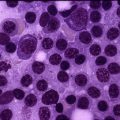New treatment options for patients with myeloma have helped to change the natural history of this disease, even in the context of relapsed disease. For standard-risk patients, doublet-based therapy may offer benefit, whereas for patients with aggressive or genetically high-risk disease combinations of agents are needed for adequate disease control. Second-generation agents offer significant activity for patients with refractory myeloma, and new categories of agents provide new targets for future study and clinical use. Combinations of these agents in selected patient populations represent the next stage in the quest to cure myeloma.
Key points
- •
Complete remission is becoming a crucial end point for longer survival in relapsed/refractory patients, especially for those not heavily pretreated.
- •
Disease-related and patient-related conditions should be considered in the management of relapsed and refractory multiple myeloma (RRMM), but the therapeutic choices presented by cytogenetic abnormalities are still untimely.
- •
Response to previous therapy may also contribute in deciding the treatment approach at the time of relapse, but no conclusive data outlining the most appropriate sequence of treatment of patients with RRMM exist.
- •
Carfilzomib and pomalidomide seem more effective and safer than their predecessors, and they may soon become the new standard in the treatment of multiple myeloma.
- •
Emerging agents with innovative mechanisms of action, like histone deacetylase inhibitors, monoclonal antibodies, and kinesin spindle protein inhibitors, are already proving to be effective in the relapsed setting.
Stay updated, free articles. Join our Telegram channel

Full access? Get Clinical Tree




